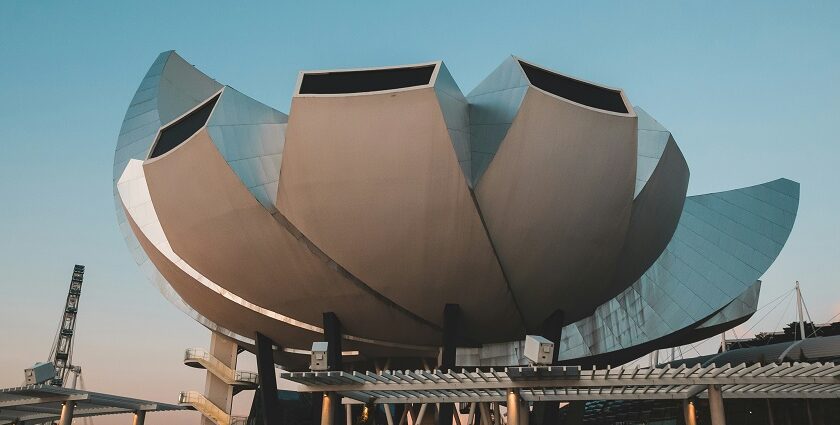Singapore is home to a diverse range of museums that reflect its rich history, vibrant culture, and artistic innovation. From national galleries filled with Southeast Asian art to interactive science centres, museums in Singapore draw visitors of every age and interest. The stories inside these museums range from heritage and nature to art and the scars left by war. Some are set in grand colonial-era buildings, while others stand in modern spaces that change the way exhibitions are seen. Together, they show the island’s role as a meeting point of many cultures. For travellers who want to see more of Singapore than its skyline, these museums are a great place to begin.
Top 10 Museums In Singapore
Museums in Singapore bring out the country’s long history, its mix of cultures, and its lively arts. Visitors can find everything from heritage and war exhibits to science, design, and modern art.
1. National Museum Of Singapore
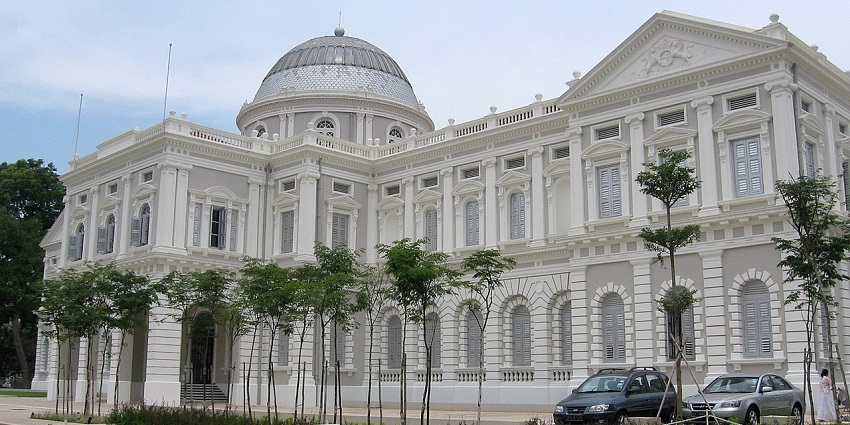
Photo: User:Sengkang / Wikimedia Commons
After its inauguration in 1887, the National Museum of Singapore has been the oldest in the country. It has been a distinctive feature of the city, both in terms of its spectacular appearance and the way it presents stories. Located in the Civic District, it is nowadays mostly known for the Singapore History Gallery, which takes its visitors through an illustrated history timeline from the 14th century to the present. The museum’s architectural design, featuring a neoclassical style with its central dome, is still a landmark of the city, whereas the interior has been modernized with immersive projection rooms and audio-visual installations.
Location: Civic District, 93 Stamford Road, Singapore 178897
Timings: 10 AM – 7 PM
Good For: First-timers, families, history lovers
Suggested Read: Asian Civilisations Museum
2. National Gallery Singapore
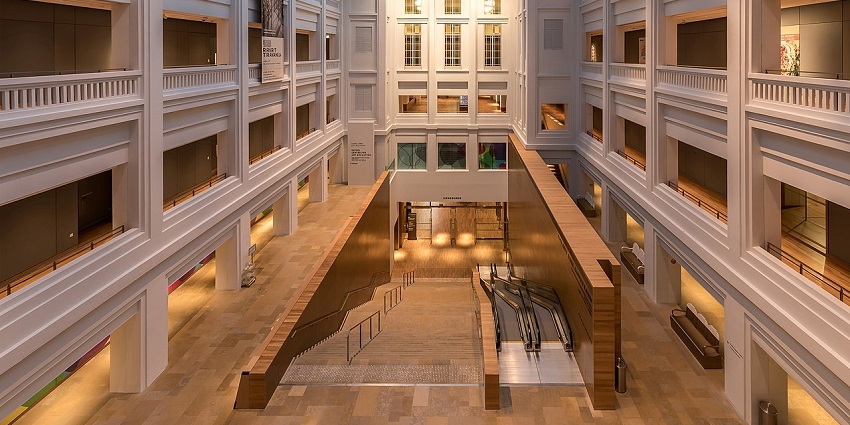
Photo: Basile Morin / Wikimedia Commons
The National Gallery Singapore sits in the former Supreme Court and City Hall, two historic buildings that have been restored with care. It is counted among the best museums in Singapore, especially for those who enjoy both art and architecture. The space is huge, stretching over 64,000 square metres, and holds the largest public collection of modern Southeast Asian art in the world. More than 9,000 works are on display, from the 19th century right up to today. Long-term shows like Siapa Nama Kamu? and Between Declarations and Dreams tell how artists shaped ideas of history and identity in the region. The galleries are wide and joined by glass walkways, giving sudden views of the Padang and Marina Bay.
Location: City Hall, 1 St. Andrew’s Road, Singapore 178957
Timings: 10 AM – 7 PM
Good For: Modern and Southeast Asian art, architecture buffs
3. Asian Civilisations Museum
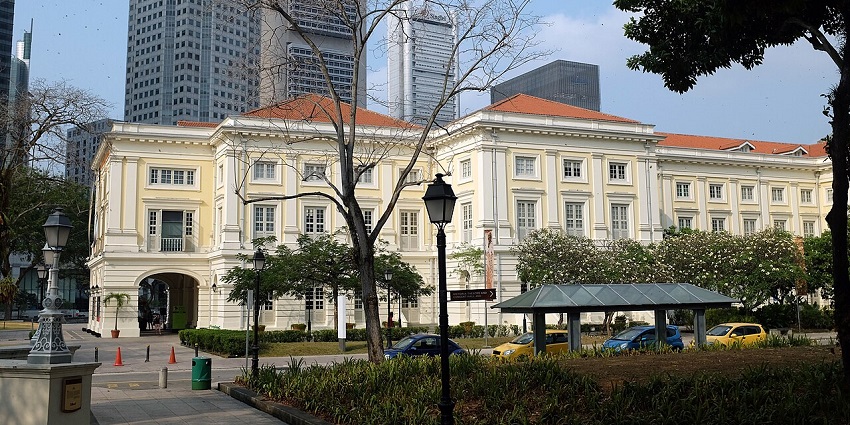
Photo: Jnzl’s Photos / Wikimedia Commons
By the Singapore River at Empress Place, the Asian Civilisations Museum (ACM) stands out as one of the most popular museums in Singapore for exploring the region’s cultural mix. Inside, the galleries are organised by theme, with sections on trade, faith, and design that link Asia’s diverse histories. Among the highlights is the 9th-century Tang Shipwreck collection, with thousands of ceramics, gold, and silver that point to Singapore’s role in the old maritime trade. The Faith and Belief gallery displays sacred items from Buddhism, Hinduism, Christianity, and Islam. They point to the wide range of traditions that left their mark on Asia.
Location: Empress Place, 1 Empress Place, Singapore 179555
Timings: 10 AM – 7 PM (Except for Fridays) & 10 AM – 9 PM (Fridays)
Good For: Art history, trade routes & design
Suggested Read: Trick Eye Museum
4. ArtScience Museum
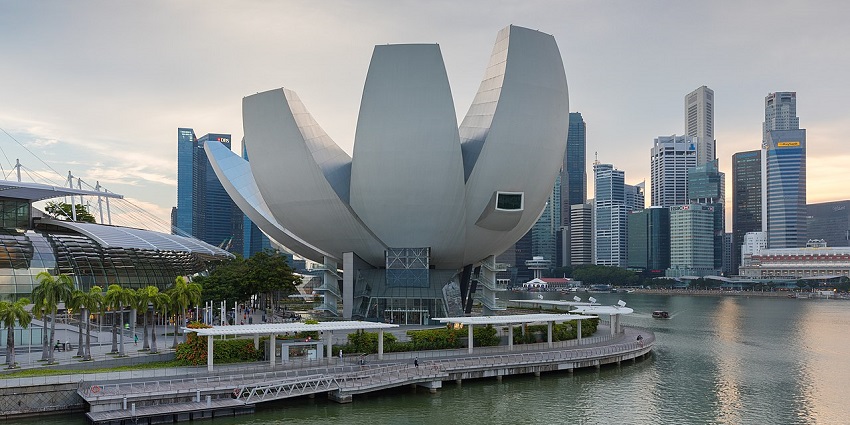
Photo: Basile Morin / Wikimedia Commons
The ArtScience Museum, shaped like a lotus at Marina Bay Sands, is considered one of the most creative and modern spots in Singapore Museums. Blending art, science, technology, and culture, it draws visitors through immersive exhibitions that move well beyond traditional displays. Its permanent gallery, Future World: Where Art Meets Science, created with teamLab, features digital works where light, sound, and movement react to people, making it especially popular with families and photography fans. In addition to this, the museum brings in international shows that range from ancient cultures to futuristic themes, often in partnership with global institutions. The architecture itself is a highlight, with its “ten fingers” form symbolising openness and creativity.
Location: Marina Bay Sands, 6 Bayfront Avenue, Singapore 018974
Timings: 10 AM – 7 PM
Good For: Interactive art, families, rainy-day fun
5. Peranakan Museum
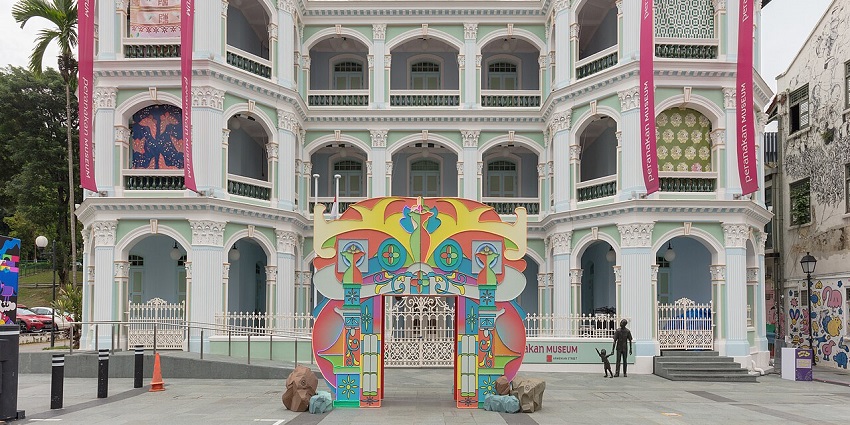
Photo: Diego Delso / Wikimedia Commons
The Peranakan Museum on Armenian Street is one of the most distinctive historical museums in Singapore, with its focus on the daily life and traditions of the Peranakan people. After being closed for a revamp, it has reopened with new galleries shaped around three themes: Origins, Home, and Style. Inside, there are glass cases of beadwork and porcelain, and wedding clothes with embroidery so fine that people often lean in close to see the details. Jewellery passed down through families is also on display. One gallery recreates a wedding chamber, with furniture and textiles that bring out how important family ties were to the community.. The museum also runs small workshops, cultural shows, and temporary exhibitions.
Location: Armenian Street, 39 Armenian Street, Singapore 179941
Timings: 10 AM – 7 PM (Except for Fridays) & 10 AM – 9 PM (Fridays)
Good For: Culture and fashion heritage, design details
Suggested Read: Ice Cream Museum Singapore
6. Singapore Art Museum
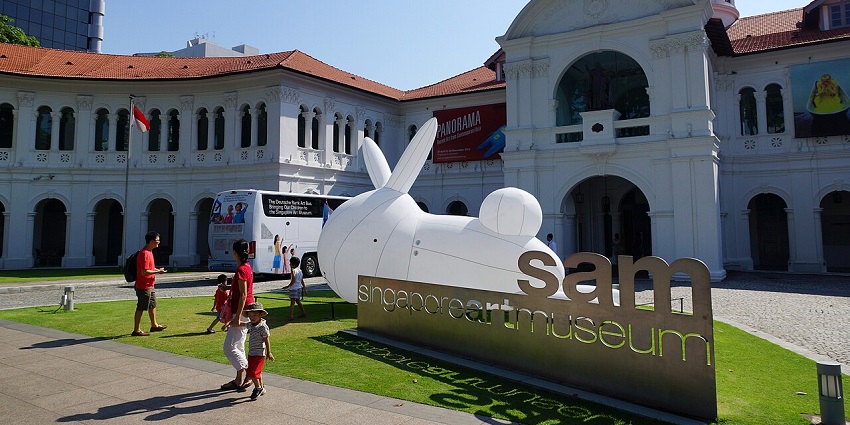
Photo: Allie Caulfield / Wikimedia Commons
The Singapore Art Museum (SAM) is now at Tanjong Pagar Distripark, a large warehouse close to the port. It ranks as one of the top museums in Singapore for exploring modern and experimental art. Unlike most galleries, SAM does not keep a focus on classics or traditional works. Instead, it shows large installations, digital pieces, and sensory exhibits that feel closer to an experience than a display. Many of the shows feature Singaporean and Southeast Asian artists, giving the region a strong voice in today’s art conversations. The open warehouse setting makes it possible to build huge environments, something that smaller museums could never manage. SAM has built a reputation for changing the way people see contemporary art in Singapore.
Location: 39 Keppel Road, #01-02 to #04-04, Tanjong Pagar Distripark, Singapore 089065
Timings: 10 AM – 7 PM (Except for Fridays) & 10 AM – 9 PM (Fridays)
Good For: Contemporary art, experimental shows
7. Lee Kong Chian Natural History Museum
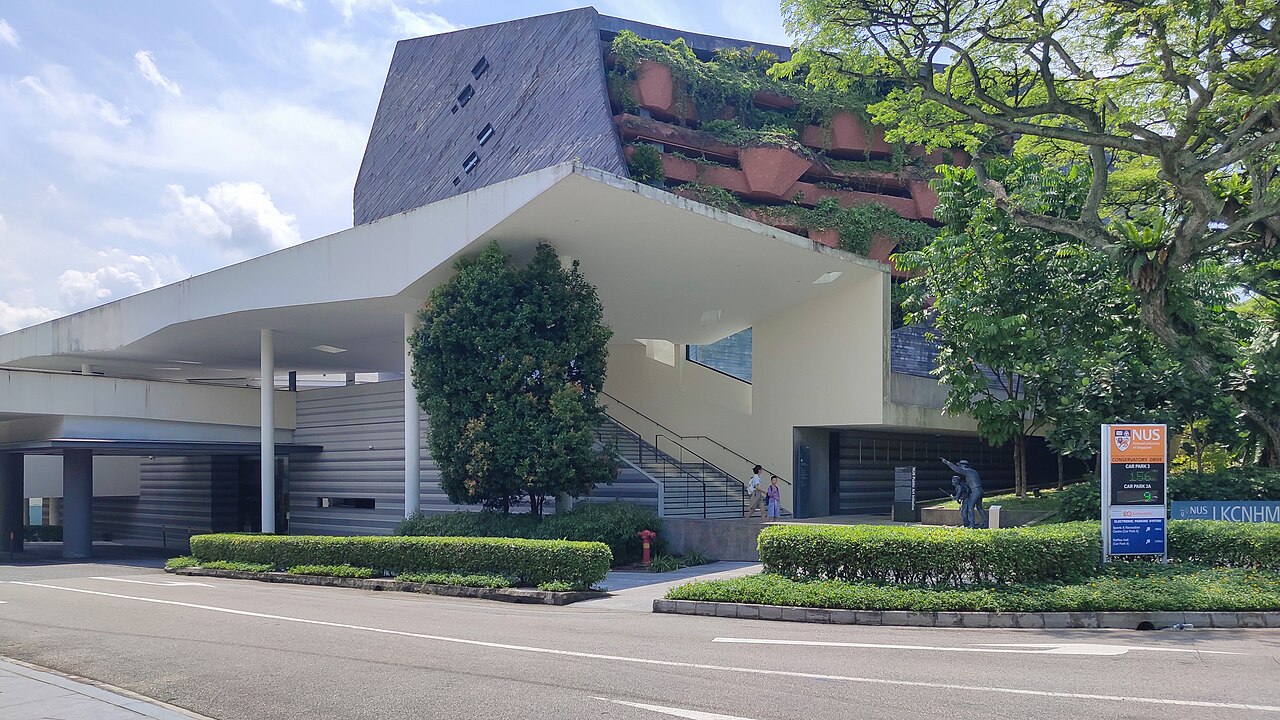
Photo: Moheen Reeyad / Wikimedia Commons
The Lee Kong Chian Natural History Museum, located within the National University of Singapore, is counted among the most famous museums in Singapore for those who enjoy nature and science. This museum consists of three giant diplodocid dinosaur skeletons, which are the main attraction that draws the attention of visitors immediately. Other than the three gigantic reptiles, the museum is home to over a million specimens that include plants of Southeast Asia and rare marine animals. One of the most featured things is the dead sperm whale that is 10.6 metres long and was found off Singapore’s coast in 2015, now offering rare insight into the marine life of the area.
Location: National University of Singapore, 2 Conservatory Drive, Singapore 117377
Timings: 10 AM – 6 PM (closed on Mondays)
Good For: Nature lovers, students, families
Suggested Read: National Museum Of Singapore
8. Indian Heritage Centre
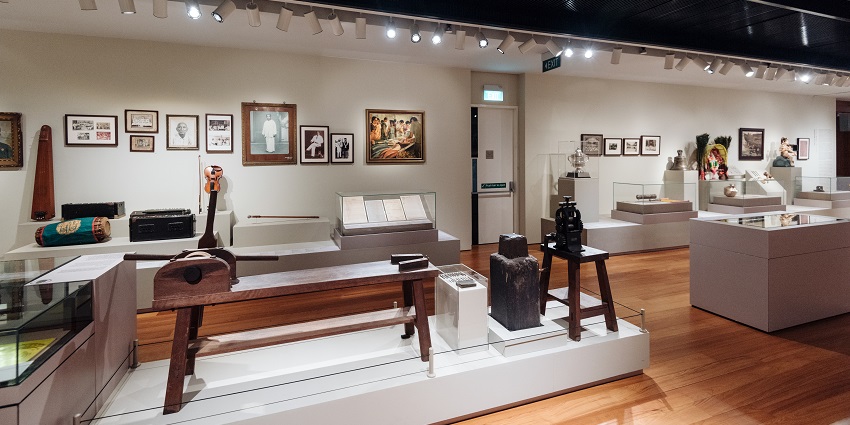
The Indian Heritage Centre, set in the middle of Little India, is a lively cultural space that honours the history and contributions of Singapore’s Indian community. Spread across four levels, the galleries cover themes such as migration, trade, traditions, and present-day identity. Exhibits include rare artefacts like traditional jewellery, handwoven textiles, ceremonial objects, and photographs that trace the journeys of early settlers. Festivals such as Deepavali and Pongal are also featured, with multimedia and interactive displays that explain their meaning and importance. Its glass façade blends old and new styles, standing as a sign of openness and continuity.
Location: Little India, 5 Campbell Lane, Singapore 209924
Timings: 10 AM – 6 PM (closed on Mondays)
Good For: Culture, neighbourhood walks
9. Changi Chapel & Museum
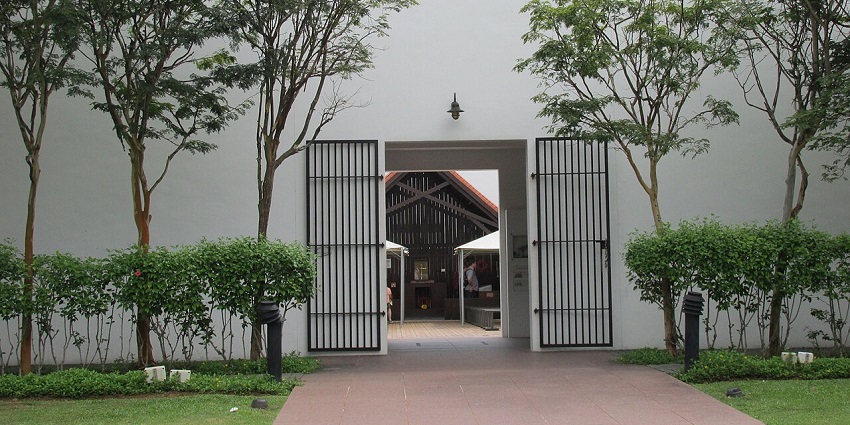
Photo: Orderinchaos / Wikimedia Commons
The Changi Chapel and Museum, located in the east of Singapore, is a serene place that preserves memories from World War II. It tells the story of prisoners of war and civilians from the Japanese Occupation using letters, diaries, drawings, and items kept by families and survivors. The chapel that stands here now is a reconstruction. It looks plain, yet it feels powerful. It stands as a reminder of the faith and strength people held in those dark years. The galleries take visitors through stories of hardship and courage, ending with the moment of liberation. At the multimedia stations, you can hear survivors tell their own stories in their own voices.
Location: 1000 Upper Changi Road North, Singapore 507707
Timings: 9.30 AM – 5.30 PM (closed on Mondays)
Good For: Military history, reflective visits
Suggested Read: Art And Science Museum Singapore
10. Battlebox
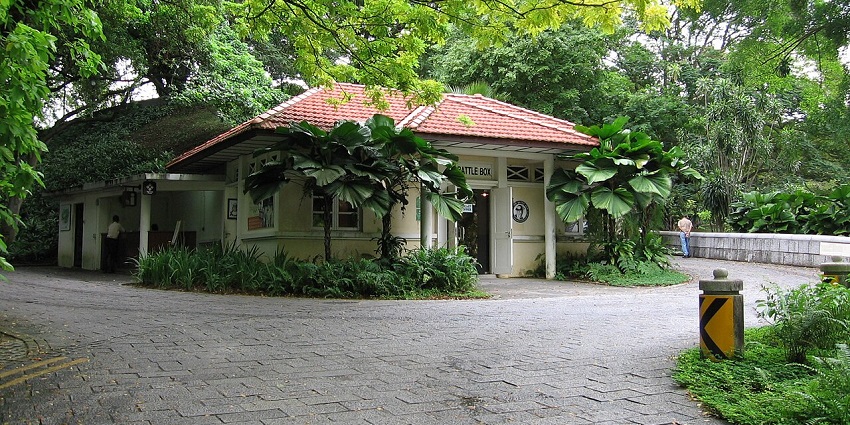
Photo: User:Sengkang / Wikimedia Commons
The Battlebox, hidden beneath Fort Canning Hill, is a restored World War II underground command centre that reveals the dramatic events leading to Singapore’s surrender in 1942. Once the nerve hub of the British Malaya Command, its 26 rooms include a war planning chamber, signal control room, and officers’ quarters, all recreated with period furnishings and lifelike wax figures. On guided tours, visitors hear about the tense choices made inside these walls, especially the point when General Percival agreed to surrender to the Japanese. It’s not only about displays. You step into tunnels, pass old maps, and hear sounds that recreate the urgency of war.
Location: Fort Canning Park, 2 Cox Terrace, Singapore 179622
Timings: 10 AM – 5 PM (Wednesday-Sunday)
Good For: WWII history, teens and adults
Exploring the museums in Singapore offers more than a glimpse into history—it reveals the island’s rich cultural, artistic, and scientific heritage. From major art galleries to small heritage centres, each museum adds a chapter to Singapore’s story. Whether you’re drawn to history, art, or interactive exhibits for families, there’s something for everyone. Plan your visit with TripXL and dive into the stories that shaped this vibrant city.
Cover Photo: Job Savelsberg / Unsplash


 WhatsApp
WhatsApp
 Twitter
Twitter
